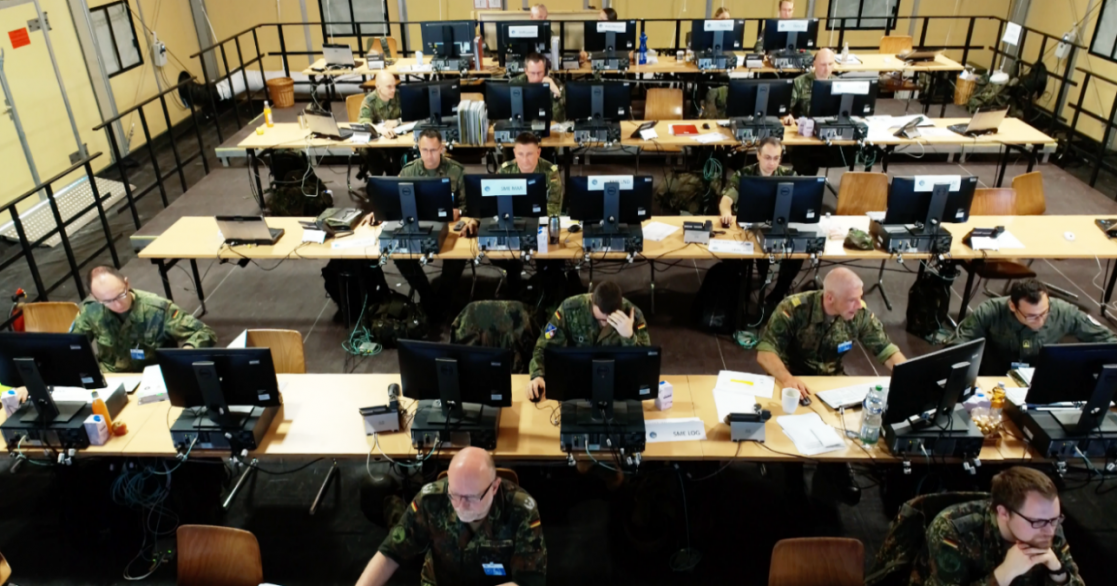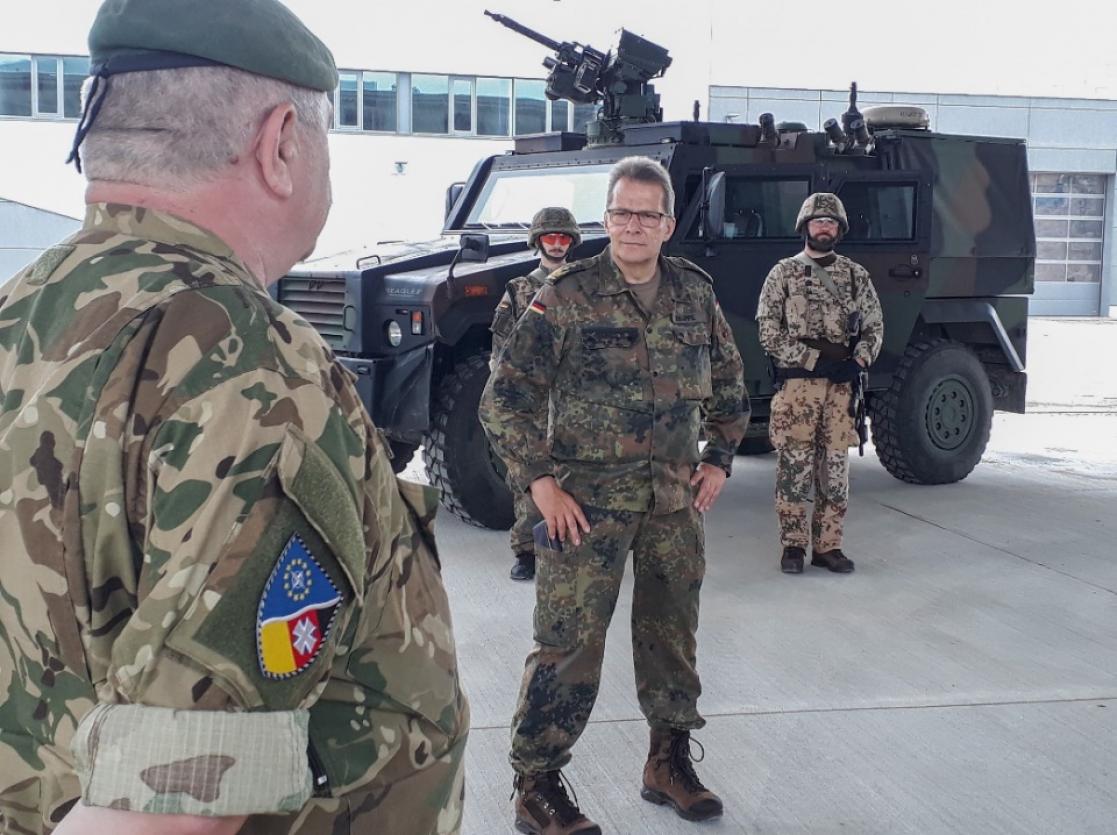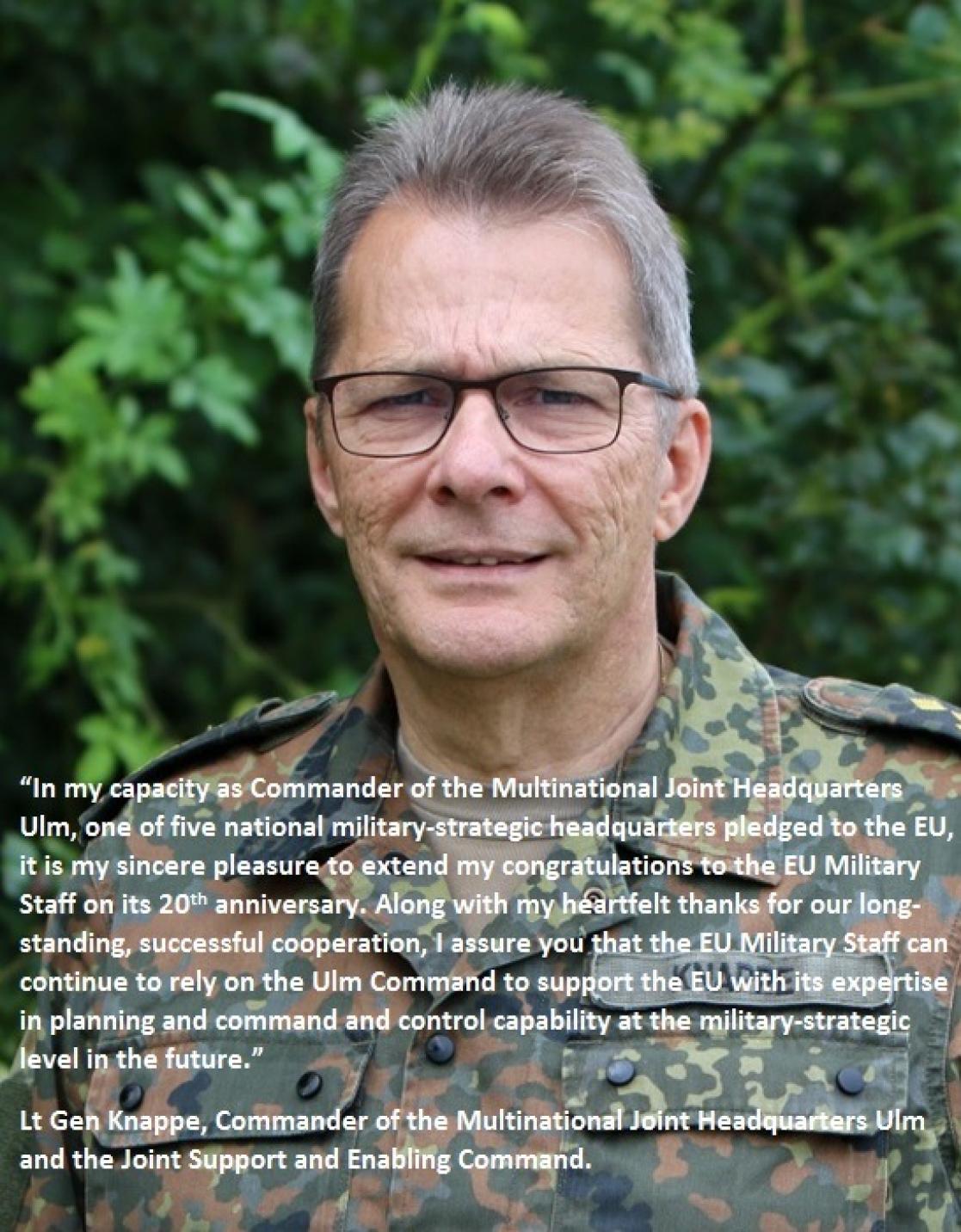Multinational Joint Headquarters Ulm; Experts for EU Crisis Response Capability

Wilhelmsburg Barracks in Ulm is unparalleled in terms of its cutting-edge functionality.
Introduction
The Multinational Joint Headquarters Ulm was established in 2013 to serve as Germany’s key contribution to strengthening the EU's Common Security and Defense Policy (CSDP). The primary goal was to substantiate the EU’s capacity for action and crisis response capability by enhancing planning, command and control capabilities at the military-strategic and operational levels. Establishing the “Ulm Command” was Germany’s response to challenges posed by international crises in Europe's immediate neighbourhood. Currently, its military and civilian staff bring with it the knowlwdge and experience from eight nations, namely Austria, Bulgaria, Czech Republic, Finland, Germany, Hungary, Luxembourg and Romania.
Reorientation of the MN JHQ Ulm
The Multi

national Joint Headquarters Ulm and its predecessor, the Response Forces Operations Command, have been making considerable contributions to the EU’s crisis response capability since 2009, when the Federal Republic of Germany pledged the Command to the EU. Along with five other national EU command headquarters in France (Paris), Greece (Larissa), Italy (Rome), Spain (Rota), and–on a case-by-case basis–in Poland (Krakow), the MN JHQ Ulm is currently available for the planning, command and control of operations across the entire Petersberg task spectrum at the military-strategic level outside Brussels.
COVID-19 conditions permitting, we will host the annual EU Commanders’ Conference attended by the Director General of the EU Military Staff and the commanders of the EU command headquarters here in Ulm in November 2021. This is a visible sign of the close cooperation between the Ulm Command and the EU Military Staff. In addition to participating in regular conferences and meetings hosted by the EU community, the Ulm Command has been actively involved in conceptual studies and concept developments for many years. Joint EU exercises, such as the recent “EU Integrated Resolve 2020,” are high on the agenda of the MN JHQ Ulm. The multinational military staff as well as the civilian members of the Ulm Command use these exercises together with their colleagues from other EU command headquarters and the EU Military Staff to practice and coordinate their actions and reactions to crises in an integrated approach typically applied by the EU.
The MN JHQ Ulm has been subject to reorganization since early 2021. The reason for this structural adjustment is a redefinition of its mission using the valuable and proven EU expertise gained in Ulm over the years. The new structure is intended to reach the central goal of strengthening the EU’s military planning, command and control capability. In its new structure, the MN JHQ Ulm will continue to embrace its responsibilities to the EU and, with the help of its multinational partners, make an essential German contribution to strengthening EU CSDP. At the core of this reorganization is the establishment of a HQ Directorate capable of being augmented. It is designed to serve as a basis for building up two independent headquarters, the EU Operation Headquarters (EU OHQ) and a Joint Logistic Support Group (JLSG) headquarters.
Coinciding with Germany’s takeover of the EU Council Presidency, the standby phase of EUBG 2020-2 began on 1 July 2020, and was extended to end on 31 March 2021. Now, we will continue to stand ready as ever to serve the EU as a military-strategic EU OHQ.
Planning Capability Package: Capabilities and expertise for EU command structures

In the coming years, we will share our expertise and long years of experience to help enhance and strengthen the EU’s central command structure. Being familiar with Brussels structures and actors, the Ulm Command knows about the EU’s planning, command and control processes as well as its concepts, which the Command helped develop. The Ulm Command can also look back on many years of practical experience as a military-strategic headquarters, establishing and preparing EU Battlegroups. In 2018, NATO certified the MN JHQ Ulm as an operational-level Joint Task Force Headquarters (JTF HQ). In the future, the Command will be able to contribute its valuable NATO expertise to the EU Military Staff as part of increasing EU-NATO cooperation. In 2018, the Ulm Command was also tasked with supporting the establishment of a new NATO headquarters in Ulm, the Joint Support and Enabling Command (JSEC). JSEC will attain full operational capability in September 2021.
The MN JHQ Ulm has capabilities and expertise designed to temporarily reinforce central EU command structures in the EU Military Staff and the Military Planning and Conduct Capability (MPCC), enabling the EU to increase its response capability. Standing by to be called upon when needed by the EU, the modular Planning Capability Package (PCP) in Ulm can be used as a planning reinforcement providing an essential contribution to take the EU’s Military Planning and Conduct Capability to the next level, especially in the time-critical early stages of an operation. We will also share our expertise and long years of experience to help prepare and provide another DEU-led EUBG in 2025. In order to prepare for these future tasks, we need to undergo regular training. As part of our training efforts, we will support the MILEX exercise series with our PCP from 2022, and again, as OHQ for the Integrated Resolve/Multilayer 2024 exercise.
Future interface for closer EU-NATO cooperation
Cooperation between the EU and NATO should continue to intensify as it is paramount for Europe’s safety and security, and harbours additional potential to boost EU resilience and capacity to act in terms of security and defence. Both organizations are integral and indispensable components of the European security architecture. The focus is on close cooperation in key areas, such as military mobility, aimed at facilitating the deployment of personnel and materiel. Conducting joint military exercises is intended to improve crisis and conflict response capabilities. Cyber defence and resilience building are two areas holding opportunities for even closer cooperation.
Thanks to the establishment of JSEC in 2018, the relocation of NATO’s strategically oriented Standing Joint Logistic Support Group (SJLSG) headquarters, and the reorientation of the MN JHQ Ulm, this location in Ulm, Germany, provides the ground for a unique European melting pot of synergies between NATO and EU headquarters, staffs, and different echelons.
In future, the complex “Military Mobility” project in particular will also be implemented below the politico-strategic level. Due to their military mission, JSEC and the SJLSG have a fundamental interest in this specific field. Resulting from its dual role as a JLSG HQ and an EU OHQ, the topic of Military Mobility has been gaining ground within the MN JHQ Ulm as well.
Modern and functional infrastructure equips Ulm garrison for future challenges

Our infrastructure contributes to strengthening security and defence efforts undertaken by the European Union and NATO. The specialized infrastructure currently being implemented at Wilhelmsburg Barracks offers modern, state-of-the-art functionality.
The construction of new multi-functional buildings for the multinational headquarters located inside the Wilhelmsburg compound offers the possibility to store, manage and perform maintenance on cutting-edge technical equipment and mobile infrastructure while training military personnel. This ensures timely availability for operations. This important milestone in materiel management serves to further improve the headquarters’ deployability and command and control capability, and represents a vital contribution to strengthening EU and NATO security and defence efforts.
This can only further enhance Ulm’s standing as a multinational garrison. As one of a kind in the entire Bundeswehr, we are at Germany’s centre of multinational expertise and international military cooperation for the EU and NATO.
This is our contribution to strengthening EU cooperation and crisis response capability.





